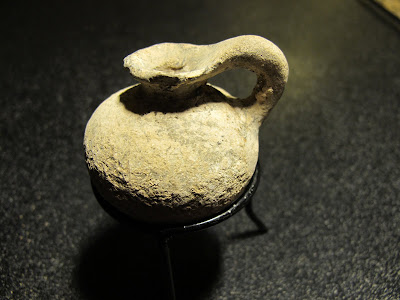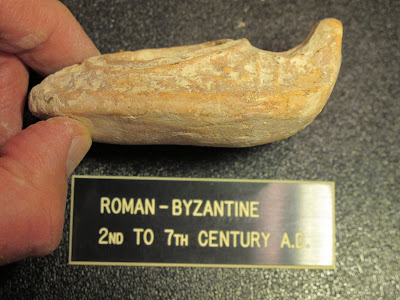 Introduction
IntroductionThe major use of the ancient lamp was illumination of domestic, commercial, and public buildings. At religious festivals and games, lamps were used on a large scale. Thousands of lamps were used during the secular games in 248 A.D. presented by Philip I. At Pompeii, around 500 lamps were used on a commercial street to light the shops. Lamps were used in large quantities as votive offerings to the gods in temples. Many lamps are found in tombs where they were intended to light the way of the departed.
Residential oil lamps and the small jugs which carried additional oil provided light and fire that was portable. They were ubiquitous in every home in the Middle East and beyond. Oil lamps are an often used metaphor in the Bible. Consider: King David, God, the tribe of Judah, Scripture, God's commands, man's perspective on life, John the Baptist, and Jesus are all called "lamps". (See 2 Samuel 21:17, 2 Samuel 22:29, 1 Kings 11:36, Psalm 119:105, Proverbs 6:23, Proverbs 21:4, Luke 11:34, John 5:35, Revelation 21:23.).
The oil lamp and oil jug reminds one of the major theme in Scripture of the interplay between light and darkness. Thanks be to God, the Light has come into the world - and his name is Jesus, blessed is He.
Most of the lamps and jugs illustrated were excavated in our around Jerusalem and Bethlehem.
It goes without comment that the date and origin of the first oil lamp is unknown--albeit one of the greatest inventions ever known to mankind.
The terracotta items in my collection represent examples of ancient oil lamps found in the homes and tombs of the common man. There were more expensive and larger examples produced.
One man who also collects oil lamps said this about his collection, which I echo: "I was fascinated to be able to see and hold an artifact from Israel that is older than any Biblical coin, and I have since acquired many more lamps, including a few that are quite a bit older than the earliest struck coinage. Although no coins existed during the time of Abraham, Moses, or Elijah, these men all used oil lamps, and some of the lamps in my collection would have been familiar to them."
I would only add that it is a moving experience to hold in one's hand something made by another man thousands of years ago. My lamps which are not for sale are to the best of my ability arranged in descending order of antiquity along with notes and other antiquities in my collection. GRL3



























